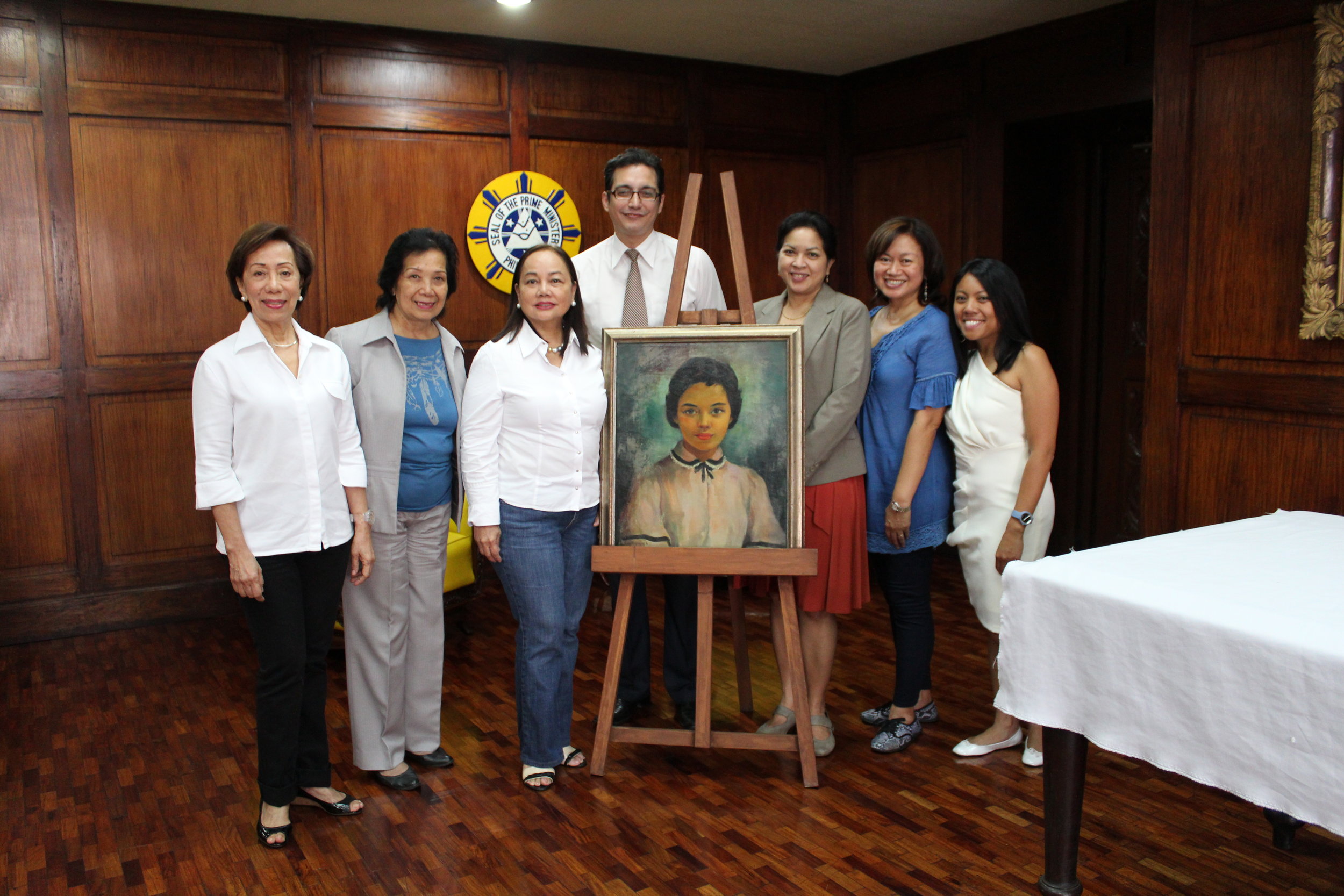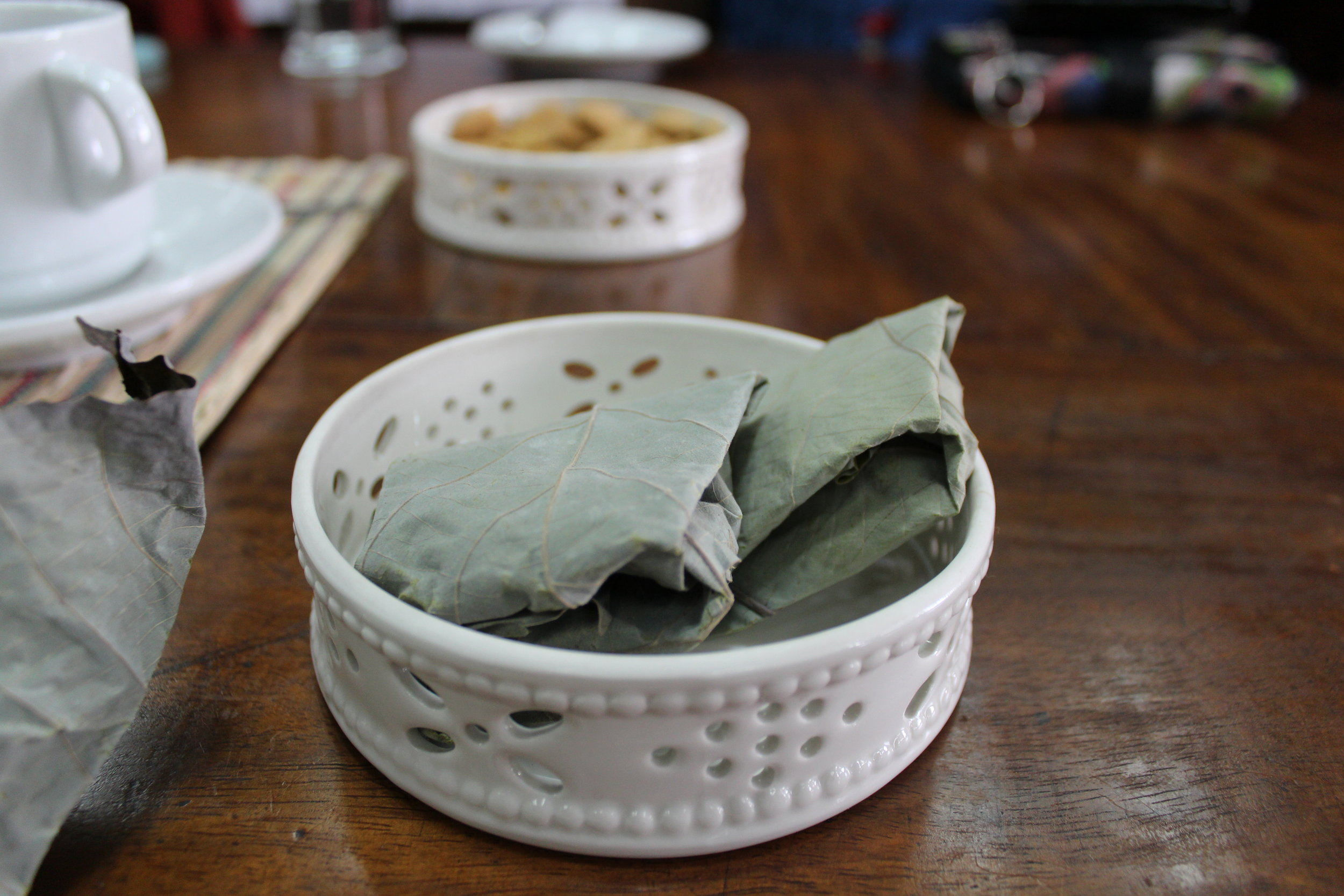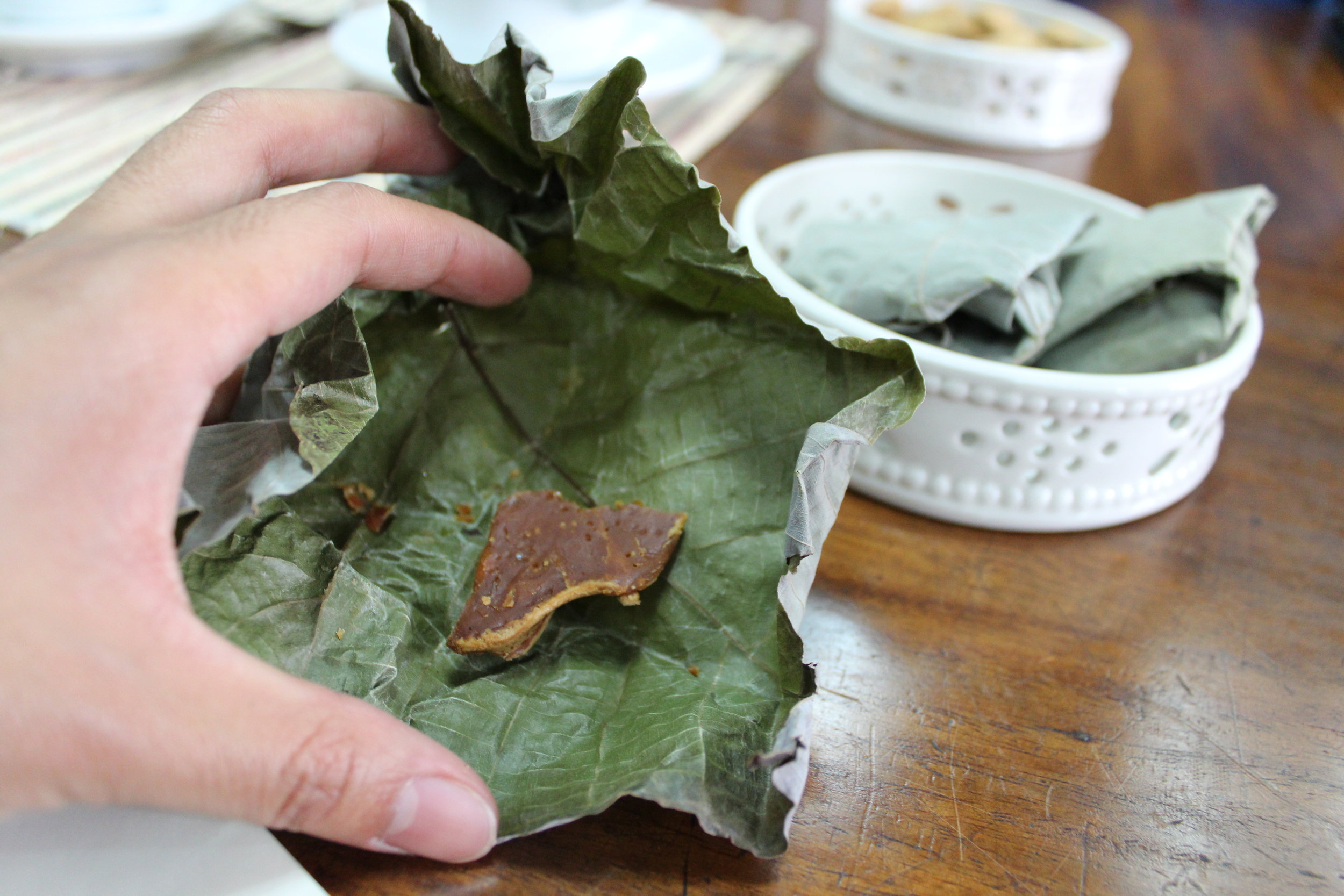A Pasalubong of Sorsogon's Pili Nut Panutsa (Panocha) or Conserva
It's Filipino custom to arrive at the home of a relative or friend with gifts - usually in the form of food specialties from your own town or province, especially the farther away you live. From my grandmother's town, we would bring karyoka (if any skewers of the deep-fried, crunchy, sticky rice disks survived the ride from Manila!) or my aunt's dragon fruit. From Iloilo, we would bring sweet mangoes. From Vigan, the famous longganisa. From Palawan, I brought dried danggit or rabbitfish back (of course, I claimed it on my customs form).
These gifts - they're called pasalubong, loosely translated to 'souvenir': Something delicious to share from faraway with your welcoming hosts or with friends and family back home. As in other Asian cultures, gift giving in the Philippines can significantly strengthen or build new relationships between individuals, even if merely regarded as a kind and thoughtful gesture.
(What would a gal from Chicago bring as pasalubong? Hot dogs don't travel well. Nor do tacos.)
Pictured below is one special pasalubong shared with me by a generous hostess, Dr. Ana Labrador, assistant director of the National Museum of the Philippines: pili panutsa - also spelled panocha from the Spanish - or conserva, brought from Sorsogon. (Faithful readers of this blog may remember the panutsa my Bicolana cousin used in her recipe for ginataan bilo-bilo.)
We had the good fortune to meet Dr. Labrador on a day when a private donor officially gave the National Museum a portrait of Marylis de Jesus Sevilla painted by the late Anita Magsaysay-Ho in 1958.
As we discussed the painting, we enjoyed a merienda of coffee and pili panutsa, gifted to Dr. Labrador from her friends who visited Sorsogon. This snack, though somewhat reminiscent of a brittle by a quick glance of the molasses surround, was much softer, almost velvety in texture. The young pili nut morsels easily gave way to the bite as the smoky brown sugar molasses melted in our mouths. The pili panutsa's sublime richness found its counterpoint in the aromatic dried leaves of the nut used to artfully wrap the sweet gift inside.
Edit added, July 25: Dr. Labrador gently corrected that the leaves the conserva is wrapped in are not the leaves of the pili nut tree, but of a flowering tree known locally in Sorsogon as malubago. Like a true scientist, she informs me that the tree's scientific name is Hibiscu tiliaceus Linn and, "The tree grows around seashores and tidal streams. It is even medicinal. Talk about sustainable pasalubong." Thanks, Dr. Labrador!
(Click any photo below to view a full-screen slide show.)
Remember, kids: Sharing is caring, especially when it comes to food.
Note: This is NOT a post sponsored by the Philippines' Department of Tourism. But I did write it while I was on that trip, during some free time on the 2013 Ambassadors' Tour and trip in July 2013, of which the Philippines' DOT underwrote my participation.
Related links:
- The Bucaio blog: 'Bring home Bicol' and 'Best Pasalubong Packaging'
- Wikipedia entry on Canarium ovatum or pili nuts. Only [grown commercially] in the Philippines!
- Two references name this snack conserva and separately name the unrefined brown sugar part of the molasses, panutsa.
- "The secret to ‘pinangat’ is in the folding of leaves," by Mickey Fenix, Philippine Daily Inquirer, 25 June 2008.
- "Bicol's Bounty," by Martin I. Tinio Jr., MOD Magazine, March 2013.
You may also like to read:
- How to cook Filipino dishes like
- Lugaw, rice porridge
- Chicken adobo (a classic!)
- Ginataan bilo-bilo, a sweet soup snack
- Halo-halo - the dessert to beat all desserts
- the infamous partially developed duck embryo, balut
- the Sorsogon treat pili panutsa or conserva.
- What is Your Favorite Filipino Street Food? (sarahlynnpablo.com) Ano ba ang paborito ninyong street food sa atin? I've written a chapter on Filipino street food for a book, Street Food Around the World (ABC-CLIO, 2013)!




